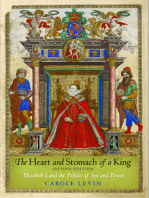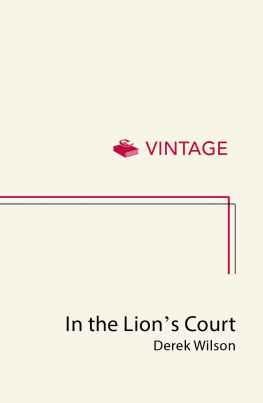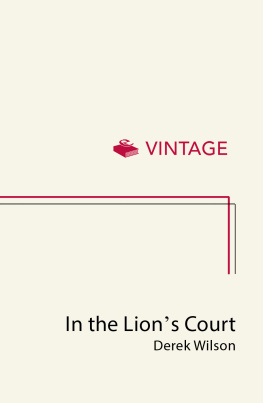
THREE REVENGE TRAGEDIES
Gmini Salgdo taught at the University of Singapore; Queens, Belfast; Earlham College, Indiana; and was Reader in English at Sussex, before he became Professor of English at the University of Exeter. Among his many publications are Eyewitnesses of Shakespeare, The Elizabethan Underworld, A Preface to Lawrence, English Drama: A Critical Introduction and King Lear: Text and Performance. He co-wrote, with Professor Peter Thomson of Exeter, The Everyman Companion to the Theatre and he co-edited, with Professor G. K. Das of Delhi University, The Spirit of D. H. Lawrence. He also edited Three Restoration Comedies, Four Jacobean City Comedies and Cony-Catchers and Bawdy Baskets for the Penguin Classics series. Professor Salgdo died in June 1985.
Three
Revenge Tragedies
EDITED WITH AN INTRODUCTION AND NOTES
BY GMINI SALGDO

Tourneur
THE REVENGER S TRAGEDY
Webster
THE WHITE DEVIL
Middleton/Rowley
THE CHANGELING
PENGUIN BOOKS
PENGUIN BOOKS
Published by the Penguin Group
Penguin Books Ltd, 80 Strand, London WC2R 0RL , England
Penguin Group (USA), Inc., 375 Hudson Street, New York, New York 10014, USA
Penguin Books Australia Ltd, 250 Camberwell Road, Camberwell, Victoria 3124, Australia
Penguin Books Canada Ltd, 10 Alcorn Avenue, Toronto, Ontario, Canada M4V 3B2
Penguin Books India (P) Ltd, 11 Community Centre, Panchsheel Park, New Delhi 110 017, India
Penguin Group (NZ), cnr Airborne and Rosedale Roads, Albany, Auckland 1310, New Zealand
Penguin Books (South Africa) (Pty) Ltd, 24 Sturdee Avenue, Rosebank 2196, South Africa
Penguin Books Ltd, Registered Offices: 80 Strand, London WC2R 0RL , England
www.penguin.com
First published as Three Jacobean Tragedies in Penguin Books 1965
Reprinted with revisions 1969
Reprinted under the present title 2004
Introduction and notes copyright Gmini Salgdo, 1965
All rights reserved
Except in the United States of America, this book is sold subject to the condition that it shall not, by way of trade or otherwise, be lent, re-sold, hired out, or otherwise circulated without the publishers prior consent in any form of binding or cover other than that in which it is published and without a similar condition including this condition being imposed on the subsequent purchaser
ISBN: 9781101492000
TO MY FATHER
CONTENTS

ACKNOWLEDGEMENTS

My grateful thanks to: Laurence Lerner and Tony Inglis for reading through and commenting on the Introduction, Brenda Magurran, Gay Massey, and Judith Everitt for typing the manuscript, and my wife and Peppy Barlow for helping with the proofs.
In revising this book for the 1969 reprint, I have been greatly helped by the Revels Revengers Tragedy, edited by R. A. Foakes.
G . S .
INTRODUCTION
I
I N the closing moments of Hamlet, Horatio looks back on the trail of intrigue and violence which has reached its tragic climax in the death of the prince and addresses the following words both to the company assembled on the stage and beyond it to us, the audience:
So shall you hear
Of carnal, bloody, and unnatural acts,
Of accidental judgements, casual slaughters,
Of deaths put on by cunning and forced cause,
And, in this upshot, purposes mistook
Falln on the inventors heads.
Horatio here sums up more than the action of a single play. His comment gives us an accurate description of a whole genre of plays, sometimes called Revenge Tragedy (itself a subdivision of a wider group, the tragedy of blood) which appeared during the last few years of the sixteenth century and the first decade or so of the seventeenth. The earliest notable example of the form is Thomas Kyds The Spanish Tragedy (c.1589) and the greatest is Hamlet itself (1600). Each of the three plays in this volume is an outstanding example of this kind of play. Together they give some idea of the range, richness, and intensity of English tragic drama in its greatest period.
A brief account of the origin and development of this form will help the reader to understand the individual plays and appreciate their distinctive qualities. But before beginning such an account, I want to clear up a possible source of misunderstanding. The last thing I wish to suggest is that each of the dramatists represented here is striving to attain the Ideal Type of the Revenge Play. Literary categories are always arbitrary and creative artists have always shown a healthy disrespect for them (if, indeed, they have been aware of their existence). Everyone knows that there is a class of fiction called the thriller; it is perhaps the most popular form of fiction in our day. It has certain broad characteristics, detection, mystery, suspense, and so on, and its practitioners range from Mr Mickey Spillane to Mr Graham Greene. In reading a work which falls within this class, it may be useful to understand the conventions of the form, if only so that we may not read with the wrong kind of expectation. But it would never occur to the ordinary reader to think that there is some Ideal Thriller which could be abstractly defined in terms of history, development, and convention and to which the works of M. Georges Simenon, Edgar Allan Poe, and Mr Erle Stanley Gardner are more or less successful approximations. Categories exist for the better appreciation of works of art, not vice versa, whatever pedants may suggest to the contrary. The works themselves come first, both in time and in importance. So that what I have to say about revenge tragedy is in no sense intended as an inclusive definition or a yardstick by which to measure the success or failure of individual plays. Such a definition would be impossible to give and useless if it could be given, for no play with any life in it could be forced into a categorical straitjacket, and no sensitive reader would want to constrict a live play in this way. What is offered here is a broad general outline, a point of vantage from which the individuality of the separate plays may be better seen. First and last the plays the thing.
My reference to the thriller was not entirely for the sake of illustration. There are several points of resemblance between the modern thriller and the seventeenth-century revenge play which should help to make the latter accessible to the modern reader. To begin with, if we go back to the lines which I have quoted from Hamlet, we shall see how well they fit the thriller too. Carnal, bloody, and unnatural acts well describes a whole sub-group of thrillers in which rapid and violent action seems to exist for its own sake. Casual slaughters aptly summarizes the attitude to murder and mayhem which many modern thrillers share with the revenge play. And purposes mistook provide the mainspring of many of the classics of detective fiction.
A centre of crime and violence is one of the things which link the thriller to the tragedy of blood. Another is the interest in the sheer mechanics of mayhem, the means by which violent crimes or misdeeds are committed. To the Jacobean audience the poisoned picture (The White Devil















